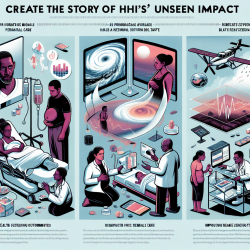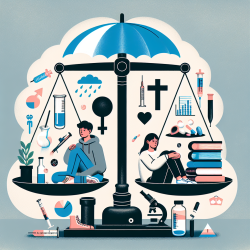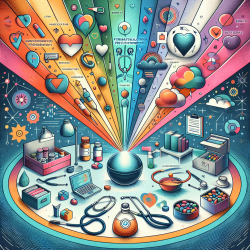Improving Transgender Health Education: Key Insights for Practitioners

Health professional education is evolving to better serve the needs of diverse populations, including transgender individuals. A recent study titled "The power to help or harm: student perceptions of transgender health education using a qualitative approach" provides valuable insights into how educational interventions can significantly improve student knowledge, comfort levels, preparedness, and clinical skills. Here are key takeaways for practitioners looking to enhance their skills or encourage further research.
The Power to Help or Harm
The study highlighted the dual potential of healthcare providers to either significantly aid or harm transgender patients. Key points include:
- Healthcare providers' influence: Negative experiences can alienate and ostracize patients, while positive experiences build trust and respect.
- Family support: The role of family in a transgender patient's well-being is crucial, with supportive environments enhancing health outcomes.
- Faith communities: Compassion rather than condemnation from faith communities can greatly benefit transgender patients.
The Responsibility to Provide Health Care
Practitioners must be educated and prepared to provide gender-affirming care. The study emphasizes:
- Responsibility to be educated: Healthcare providers should be knowledgeable about transgender health to avoid detrimental gaps in care.
- Responsibility to build trust: Using correct language and creating a safe space is essential for effective care.
- Navigating professional and personal identities: Balancing personal beliefs with professional responsibilities is critical.
A Posture of Humility: Listen and Learn
Continuous learning and listening to transgender narratives are vital. The study suggests:
- Centering transgender narratives: Understanding lived experiences is key to providing respectful and effective care.
- Openness to continuous learning: Practitioners should remain open to learning and improving their skills.
- Practical takeaways: Implementing inclusive language, creating welcoming environments, and using open-ended questions are practical steps to improve care.
Conclusion
Health professional students were highly receptive to transgender health education delivered by transgender community members. First-person accounts of both positive and negative experiences in healthcare are particularly effective at illustrating the power of healthcare providers to help or harm transgender patients. Reflection and constructive dialogue offered students an opportunity to explore their identities as healthcare providers at the intersection of their religious and cultural beliefs. To read the original research paper, please follow this link:
The power to help or harm: student perceptions of transgender health education using a qualitative approach.
Citation: Linsenmeyer, W., Heiden-Rootes, K., Drallmeier, T., Rahman, R., Buxbaum, E., Walcott, K., Rosen, W., & Gombos, B. (2023). The power to help or harm: student perceptions of transgender health education using a qualitative approach. BMC Medical Education, 23, 836. https://doi.org/10.1186/s12909-023-04761-9










